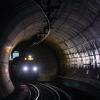Why more and more winemakers in Germany threatens

Lent Is not high season for breweries and winemakers. Many customers have beer, wine and other alcoholic drinks in the weeks until Easter. More and more people drink or no other alcohol. This presents the industry with existential challenges. In addition to rising costs for raw materials, energy and personnel, the changed consumption behavior clouds the balance sheets. Many breweries have therefore changed years ago. Non -alcoholic beer is taking an ever larger place in the range. Most winemakers still have to go this way. This threatens many of them.
Simone Loose from the Institute for Wine and Beverage Industry at the Geisenheim University of Applied Sciences sees the wine manufacturers twice under pressure. « We see a strong change in the market, for two reasons. First: Wine is a luxury goods that you don’t necessarily have to have as a customer if it gets a little tighter financially. And secondly, we see the long -term trend that people drink less alcohol, » she says in an interview with our editorial team.
Alcohol consumption has been steadily declining for decades
The statistics show this thesis: alcohol consumption in Germany has been falling slowly but steadily for decades. The consumption of pure alcohol in 1980 was still more than 15 liters per person, 40 years later it was only about 10 liters a year. This emerges from figures from the Federal Institute for Public Health. The wineries currently meet this development harder than the brewers, although the beer consumption nationwide has also decreased last year.
More than 40 percent of the brewing sites are still in Bavaria, although there are also many, especially smaller companies in the Free State. Overall, the industry in Germany is broken Against the Germany trend and was even able to increase its paragraph 2024 slightly. One of the recipes of success: non -alcoholic beer, which now makes up almost nine percent of the Bavarian breweries business. Nationwide, sales with non -alcoholic beer have more than doubled within a decade.
Do the winemakers follow the example of the beer brewers?
Do the wineries have to be considered soberly, so only this encouraging example follow to stabilize the yields? « The wine industry reacts to this situation. But we know from the brewers that it takes a few years to get a non -alcoholic product that is almost interchangeable with the original, » says Loose. The expert does not assume that this is the right way out for all companies, since only the large manufacturers have the technological possibilities. Making non -alcoholic wine means additional effort. « So there are also other costs that are reflected in the price, even if they cannot be passed on at all, » says the expert. The non -alcoholic variant should be too expensive for many consumers.
Two thirds of the winery could disappear
For more and more companies, the question will therefore arise in the coming years whether the effort is still worthwhile. « Many winegrowers make the high production costs, in combination with the oversupply of wine on the market and the falling demand, to create clearly, » says Loose. Unlike the majority of the breweries, most wineries do not buy their raw materials, but create them themselves on large acreage that have to be managed complex and expensive. That cannot be changed overnight. The sobering forecast of the expert: « I expect that in 20 years there will only be a third of today’s businesses who have successfully adapted to this change. »
This text comes from our archive.







